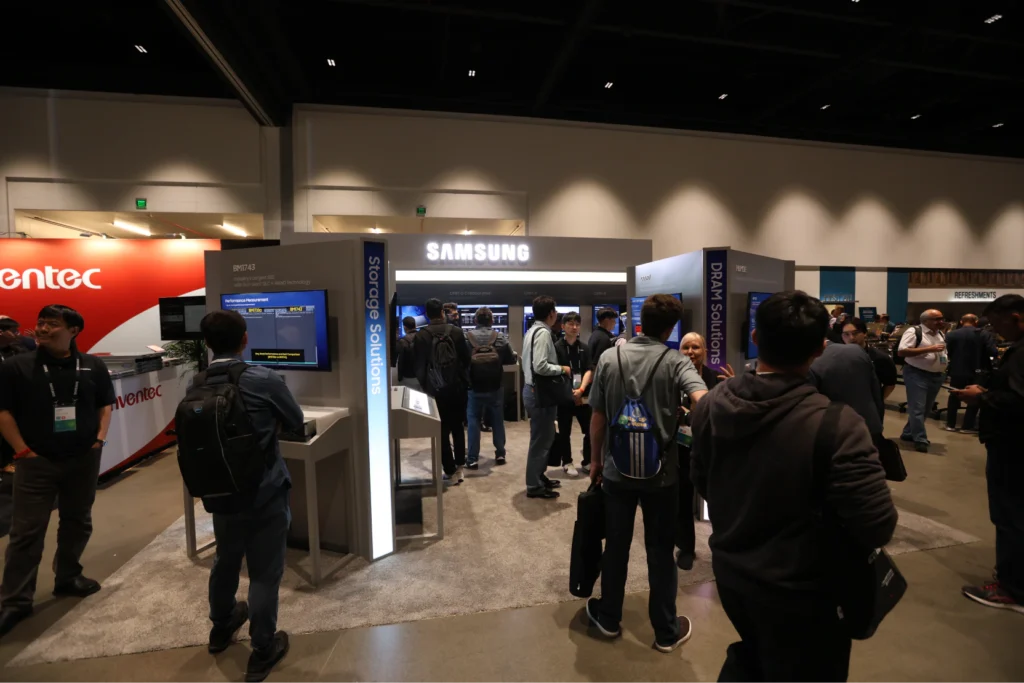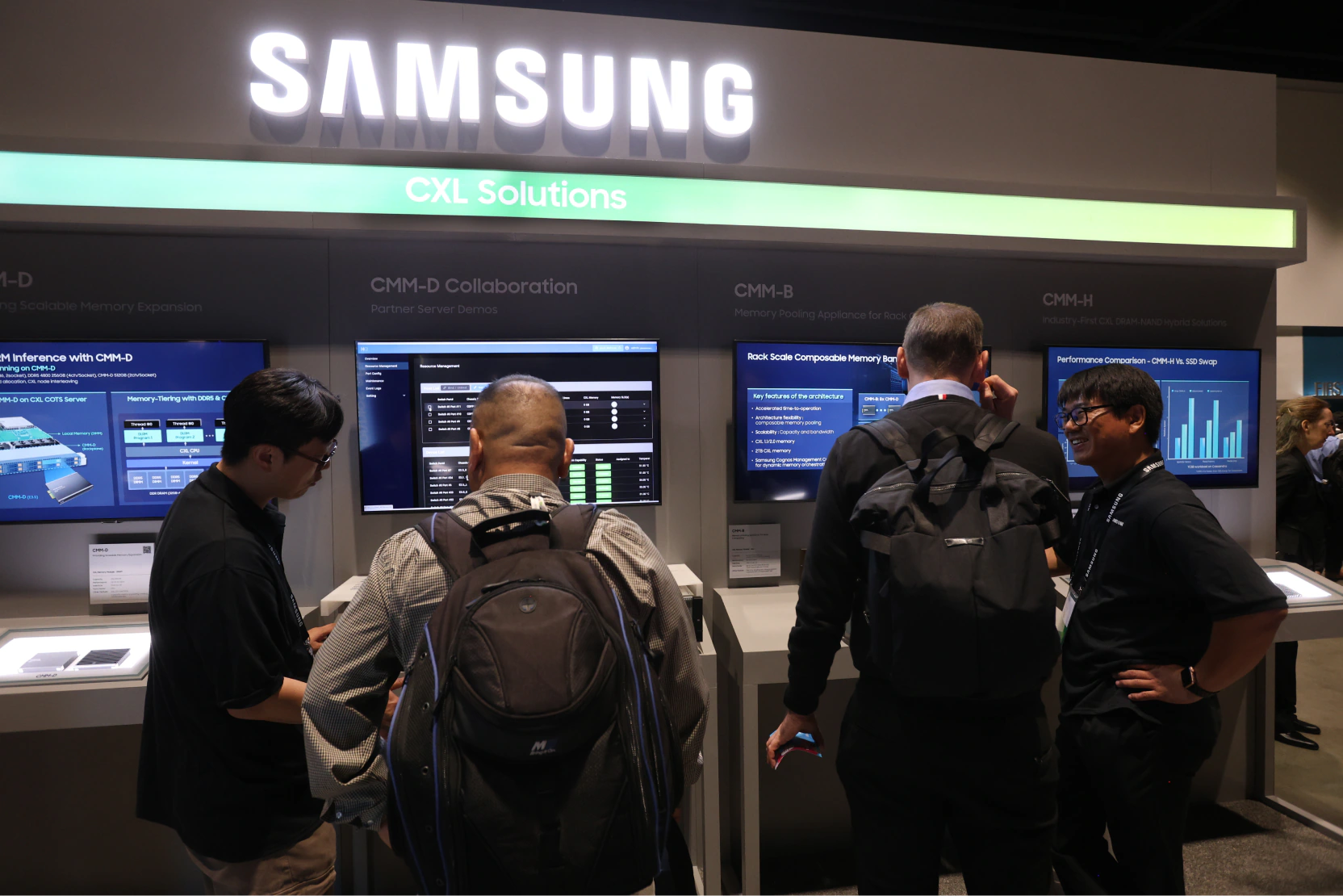AI: Samsung Next-Gen CXL Solutions
sung Next-Gen CXL Solutions
As the AI revolution transforms the data center and server memory landscape, the demand for high-capacity and high-bandwidth solutions grows exponentially. AI: Samsung Next-Gen CXL Solutions This trend challenges conventional memory technologies and architectures, pushing the industry towards innovative solutions.
At the 2024 OCP Global Summit, held October 15-17 in San Jose, California, Samsung Electronics highlighted its next-generation memory technologies, demonstrating how these solutions can be implemented into partner collaborations to bring about real-world impact while addressing AI’s growing demands.
As the desire for data-intensive workloads continues to rise, Samsung Electronics is once again at the forefront, unveiling cutting-edge solutions across memory and storage technology. At the core of their latest advancements are Compute Express Link (CXL) solutions, complemented by breakthrough developments in DRAM and Storage Solutions.

Samsung’s Next-Gen CXL Solutions
To meet the rapidly increasing demands of the AI industry, Samsung unveiled a range of Compute Express Link (CXL) solutions, including CMM-D, CMM-H, and CMM-B, which address the limitations of conventional memory architecture by allowing efficient resource management and memory expansion. ai with sumsung These CXL solutions utilize CXL 2.0 technology to facilitate seamless communication between CPUs, GPUs, and accelerators, significantly enhancing performance in data center environments .ai-samsung
A key highlight at the show, was CMM-D (CXL Memory Module – DRAM), which is positioned to redefine server memory scalability by offering substantial capacity and performance benefits.ai-sumsung At the CMM-D Collaboration Corner, Samsung showcased partners’ server demos equipped with CMM-D to demonstrate the transformative impact of CXL memory in data-heavy environments.
By combining CMM-D with NAND Flash, Samsung offers CMM-H (CXL Memory Module – Hybrid) in a type of PM (Persistent Memory) and TM (Tiered Memory), optimizing memory capacity and bandwidth for next-generation applications. In order to enhance data transfer by addressing latency concerns, Samsung’s CMM-B (CXL Memory Module – Box) solution enables a smoother experience for complex workloads. Its ability to support extensive memory pools further ensures efficient handling of demanding data processes.
Leading the Memory Revolution: DRAM and Storage Innovations
While CXL takes center stage in Samsung’s next-gen memory solutions, the advancements in DRAM and Storage technologies remain critical components of the company’s offering. HBM3E, for instance, is built to process the immense data demands of AI models, providing speeds of up to 1,250GB/s and boosting thermal efficiency by 12%. This makes it a key enabler for smooth and rapid data processing across AI applications.
Complementing this is RDIMM (Registered DIMM), which stabilizes high-performance systems by reducing electrical load, ensuring reliability under heavy workloads. For applications that demand even more bandwidth, MCRDIMM (Multi-Ranked Buffered Dual In-Line Memory Module) steps in, with data throughput up to 12.8Gbps (based on Gen2), providing a critical advantage for handling AI and high-performance computing tasks.
AI -SAMSUNG PBSSD
In storage, Samsung’s PBSSD (Petabyte-class SSD) and PM9D3a SSD are engineered to meet the rising demand for cloud and enterprise solutions. The PBSSD integrates Samsung’s latest V-NAND technology, offering enhanced scalability with configurations up to 928TB when combined with 26pcs of BM1743 and 6pcs of PM9D3a, for example. This solution features power optimization technology that reduces energy consumption by about 20%, increasing rack density in data centers. The PM9D3a SSD ensures high-speed performance and reliable data transfer as the industry’s fastest 8ch PCIe 5.0 SSD with OCP DC spec v2.5 in mass production, while the BM1743 SSD demonstrates Samsung’s commitment to scalable, high-performance storage solutions tailored for modern enterprise infrastructure.




0